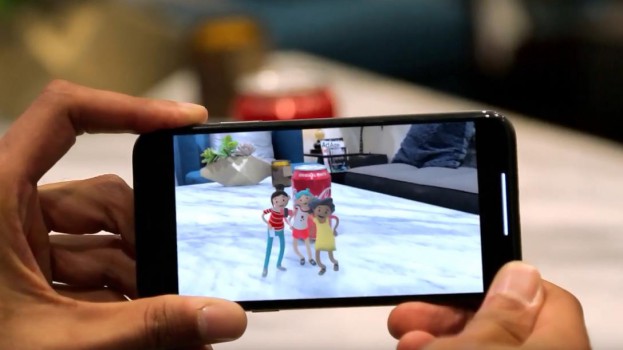Integration with AR (Augmented Reality)

Packaging with “augmented reality” is one of the ways to break the monotony that people already experience when buying different products.
It has the ability to change the usual packaging of products into screen for socializing with clients and telling stories.
In 2024, the integration of “augmented reality” in packaging is expected to reach new heights.
Brands are increasingly using this AR ( augmented reality) on their packaging to offer extraordinary experiences, allowing clients to interact with the products in ways that have never been seen before.
For example, a cosmetics brand can allow customers to virtually try different shades of makeup only by scanning the product’s packaging with a smartphone.
For a better understanding of this technology, it should be said that augmented reality is the overlapping of digital visual images with the real world shown through the camera of the mobile phone, so that it seems as if they are in one reality.

There are two approaches to its implementation, a marker-based approach or, as it is sometimes called, a recognition-based approach and a location-based approach.
The type based on the marker evokes or activates the augmented reality, when the camera of the smartphone captures the exact marker, which is related to the program in the phone itself.
The marker can be any type of object shown on the packaging itself.
One of the well-known 2D markers is a QR-code, that when is scanned will open a view on something.

However, an augmented reality marker can go far and can be a colorful 3D object or an animated representation of something.
The location-based approach requires built-in GPS software that recognizes the recorded location and evokes, or activates, augmented reality at the point where it is needed.
For a better understanding of how packaging with augmented reality really works and increases attractiveness,here are some examples of well-known companies that have been implementing this interactive technology on their packaging for some time.
Nesquik
Nesquik, the well-known brand for chocolate milk, has accepted the possibility of AR (augumented reality) packaging and implies that on one of its boxes of Nesquik cereals with an accent on children to be the target audience for this product.
The main goal of this campaign was to increase engagement with the brand and as a result to achieve repeat purchase of the product.
This was done through the creation of entertaining content that will best appeal to children and educational content that will be supported by parents.
Consumers who scanned the packaging of Nesquik using the appropriate application were greeted with a beautiful animated world that appeared on their mobile phones.

The cartoon characters shown on the packaging jumped from the packaging, danced and celebrated, creating an unforgettable and attractive experience for children.
Nesquik’s augmented reality packaging project achieved outstanding results, increasing brand loyalty and encouraging repeat purchases.
Parents appreciated the innovative approach to breakfast, and children eagerly expected to enjoy their daily glass of Nesquik milk, which increased sales and market share of the brand by 20%.
Kellogg’s
Kellogg’s, the global leader in breakfast cereals, has also adopted and implemented AR technology for labeling their boxes with augmented reality.
They started a campaign that turns cereal boxes into interactive games and educational experiences.

By scanning the packaging, consumers can access mini-games and nutritional information, and even watch videos related to the product.
This campaign not only engaged consumers but also educated them about the nutritional value of Kellogg’s cereals.
Analogous to this, there was an increase in engagement with consumers and an improvement in the perception of the brand itself.
Coca-Cola
Coca-Cola has also accepted the use of augmented reality in some of their products in order to improve and add added value to their packaging.

By scanning can labels with a smartphone, consumers unlock interactive content, such as games, music playlists, and even the chance to virtually share a Coke with friends around the world.
This not only improves the brand experience, but also creates a social relationship through the product.
At the end it can be said that the packaging with augmented reality is the trigger that makes the product stand out either with extended, additional information, which is needed when making decisions, or with other benefits that the client is looking for.
Pingback: Use Of Graphics Standards In The Packaging Industry | Offset printing technology | Offset lithography